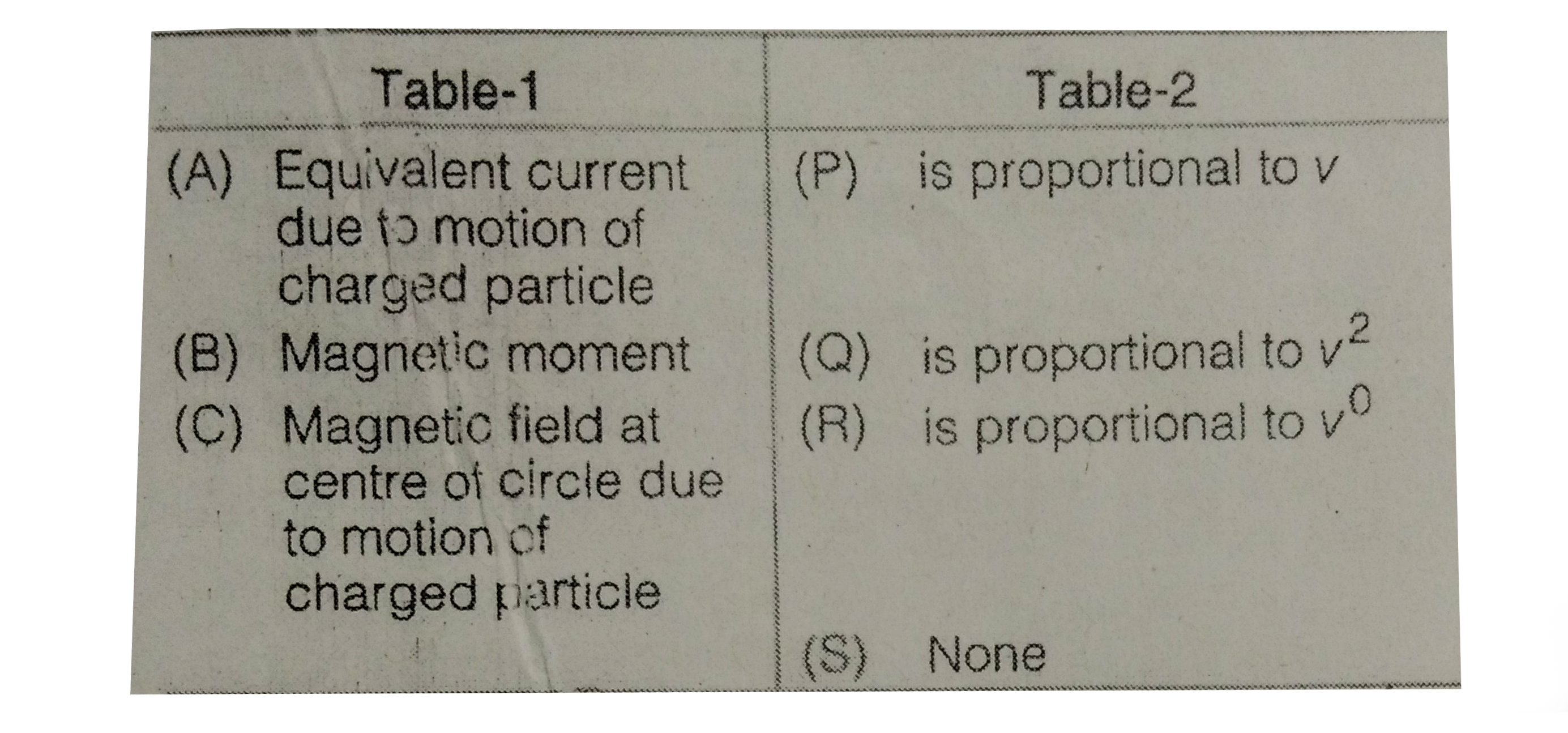A proton and an alpha particle move in circular paths in a plane perpendicular to a uniform magnetic field. If the kinetic energy of the two particles is equal, the ratio of the radii of their paths is _________.
The correct Answer is:1
To find the ratio of the radii of the circular paths of a proton and an alpha particle moving in a magnetic field with equal kinetic energy, we can follow these steps:
Step 1: Understand the relationship between radius, mass, charge, and velocity in a magnetic field
The radius r of the circular path of a charged particle moving in a magnetic field is given by the equation:
r=mvqB
where:
- m is the mass of the particle,
- v is the velocity of the particle,
- q is the charge of the particle,
- B is the magnetic field strength.
Step 2: Relate kinetic energy to velocity
The kinetic energy KE of a particle is given by:
KE=12mv2
From this, we can express the velocity v in terms of kinetic energy and mass:
v=√2KEm
Step 3: Substitute velocity into the radius formula
Substituting the expression for v into the radius formula gives:
r=m√2KEmqB=√2m⋅KEqB
Step 4: Set up the ratio of the radii for the proton and alpha particle
Let rp be the radius for the proton and rα be the radius for the alpha particle. Since the kinetic energies are equal, we can write:
rprα=√2mp⋅KEqpB÷√2mα⋅KEqαB
This simplifies to:
rprα=√mpqp÷√mαqα=√mp⋅qα√mα⋅qp
Step 5: Substitute known values for mass and charge
For a proton:
- Mass mp=m (mass of proton)
- Charge qp=e (charge of proton)
For an alpha particle:
- Mass mα=4m (mass of alpha particle, which is 4 times that of a proton)
- Charge qα=2e (charge of alpha particle, which is 2 times that of a proton)
Step 6: Calculate the ratio
Substituting these values into the ratio gives:
rprα=√m⋅2e√4m⋅e=2√m2√m=12
Final Answer
Thus, the ratio of the radii of their paths is:
rprα=12
---
The radius r of the circular path of a charged particle moving in a magnetic field is given by the equation:
r=mvqB
where:
- m is the mass of the particle,
- v is the velocity of the particle,
- q is the charge of the particle,
- B is the magnetic field strength.
The kinetic energy KE of a particle is given by:
KE=12mv2
From this, we can express the velocity v in terms of kinetic energy and mass:
v=√2KEm
Substituting the expression for v into the radius formula gives:
r=m√2KEmqB=√2m⋅KEqB
Let rp be the radius for the proton and rα be the radius for the alpha particle. Since the kinetic energies are equal, we can write:
rprα=√2mp⋅KEqpB÷√2mα⋅KEqαB
This simplifies to:
rprα=√mpqp÷√mαqα=√mp⋅qα√mα⋅qp
For a proton:
- Mass mp=m (mass of proton)
- Charge qp=e (charge of proton)
- Mass mα=4m (mass of alpha particle, which is 4 times that of a proton)
- Charge qα=2e (charge of alpha particle, which is 2 times that of a proton)
Substituting these values into the ratio gives:
rprα=√m⋅2e√4m⋅e=2√m2√m=12
Thus, the ratio of the radii of their paths is:
rprα=12
Similar Questions
Knowledge Check
A particle carrying a charge moves perpendicular to a uniform magnetic field of induction B with a momentum p then the radius of the circular path is
ABe/pBpe/BCp/BeDBepA charged particle moves in a circular path in a uniform magnetic field. If its speed is reduced, then its time period will
AincreaseBdecreaseCremain sameDnone of theseThe momentum of α-particles moving in a circular path of radius 10 cm in a perpendicular magnetic field of 0.05 tesla will be :
A1.6×10−20km m/sB1.6×10−21kb m/sC1.6×10−19kg m/sD1.6×10−18kg m/s
A proton, a deutron and α-particle, whose kinetic energies are same, enter perpendicularly a uniform magnetic field. Compare the radii of their circualr paths.
View SolutionAn α -particle of 1 MeV energy moves in circular path in uniform magnetic field. The kinetic energy (in MeV) of proton in the same magnetic field for circular path of double radius is
View SolutionA proton an an α−particle, moving with the same velocity, enter a uniform magnetic field, acting normal to the plane of their motion. The ratio of the radii of the circular paths descirbed by the proton and α-particle is
View SolutionA charged particle is moving in a circular path in uniform magnetic field. Match the following.

View SolutionA proton an an α−particle, moving with the same velocity, enter a uniform magnetic field, acting normal to the plane of their motion. The ratio of the radii of the circular paths descirbed by the proton and α-particle is
View Solution